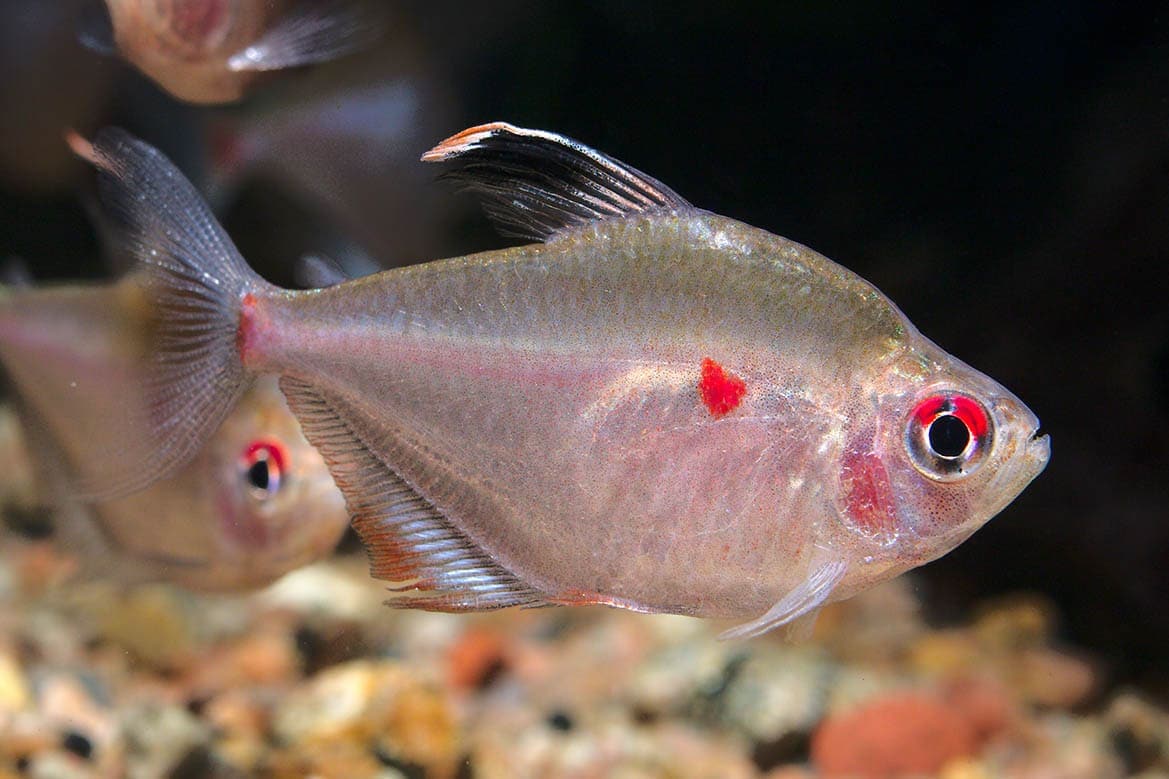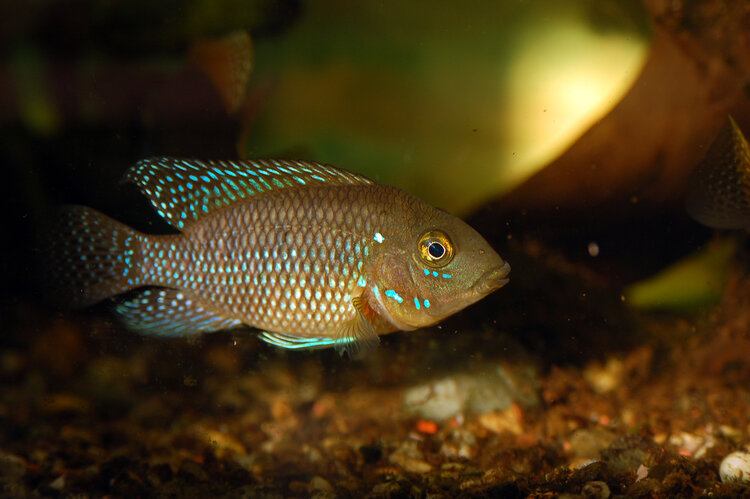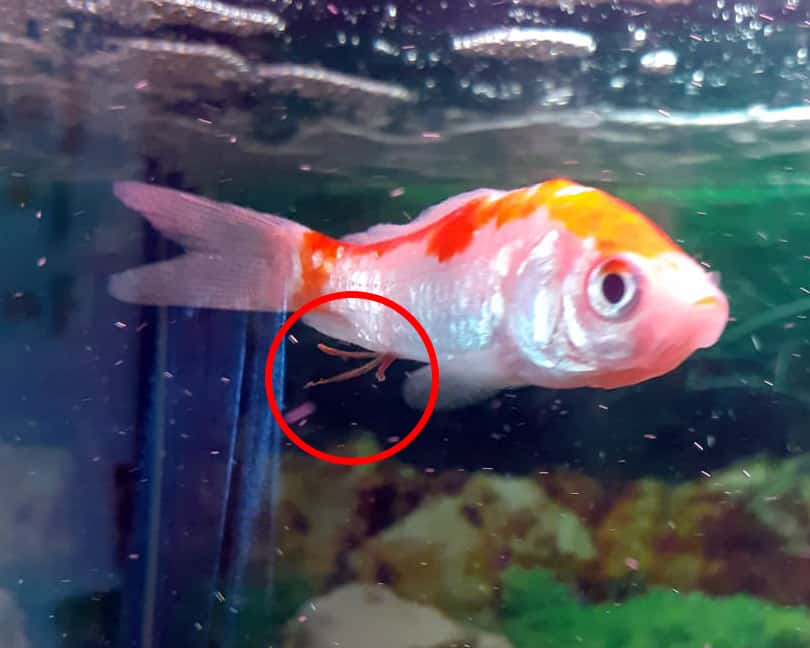Loaches: Care Guide, Types, Lifespan & More (With Pictures)

Updated on
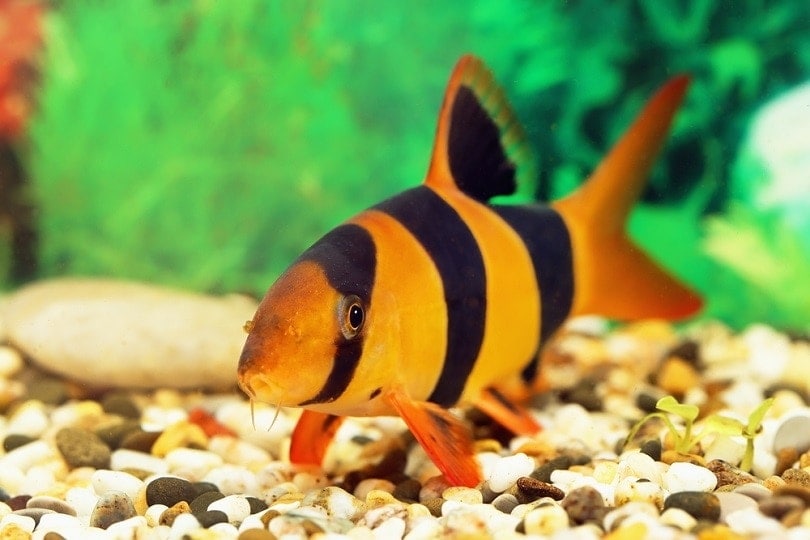
Loach fish (Cobitoidea) are a group of small freshwater fish. There are approximately 50 species that are important in the aquarium trade. All species of loaches can be kept in an aquarium but not all species are readily available. These fish are native to Europe and Asia to northern Africa where they thrive in both the temperate and tropical flowing water sources of rivers and creeks. Four common loaches are popular in aquarium hobbies. These loaches are namely the khuli loach, clown loach, yoyo loach, and the zebra loach. Although they fall under different names, all their care is similar.
This guide will inform you of their correct care requirements and different varieties of all species of loaches.
Quick Facts About Loaches
| Species Name: | Cobitoidea |
| Family: | Botiidae, Gastroyzontidae, Baloridae, Nemacheilidae, Barccidae, Ellopostomatidae |
| Care Level: | Intermediate |
| Temperature: | Temperate: 18°C to 25°C |
| Temperament: | Peaceful |
| Color Form: | Brown, yellow, black, white, orange |
| Lifespan: | 10 to 12 years |
| Size: | 1 inch for miniature species to 20 inches for larger species. |
| Diet: | Omnivores |
| Minimum Tank Size: | 40 gallons (>6 inches), 200 gallons (<12 inches) |
| Tank Set-Up: | Plants, caves, and wood |
| Compatibility: | Community |
Loach Overview
Loaches are peaceful, bottom-dwelling fish that help keep your aquarium clean. These fish are nocturnal and will be most active at night when the tank lights have been switched off. This is when they will be most energetic and scavenge for food around the tank. They are shy and peaceful (except for the semi-aggressive clown loach). They are not good beginner fish because of the experience and knowledge level required to keep them healthy. We recommended loaches to be cared for by an intermediate or advanced aquarist who has an established tank. They are omnivores who will scavenge along the floor of the aquarium in search of food.
Despite their small size, they require a large tank. This is because some can get quite large, with the flower loach reaching a whopping 20 inches! They are prone to a variety of diseases that do not usually affect other fish in the same situation. They lack scales on their head which makes them sensitive to most medications. When combined with their susceptibility to illness and their sensitivity to medications, it is a difficult task to successfully treat them.
There are over 1,000 different species in the aquarium trade, with many available for life in captivity. Since there are so many different types of loach, you should double-check with the supplier if the species you are buying is the correct one for your needs. This can be done by asking for the scientific name of the loach.
Loaches can easily be confused with Pangio cuneovirgata, Pangio myseri or even Pangio semicincta. Loaches have a lifespan ranging from 10 to 12 years. A well-cared-for loach can live longer than a loach kept in poor conditions under constant stress.

How Much Do Loaches Cost?
Loaches are not particularly expensive. You can expect to pay between $3 to $5 for one loach at a pet store. The price can vary depending on the type of loach you choose to buy as well as the size, color, and rarity of the fish. It is best to avoid wild-caught loaches, because of their high stress with transportation. When their immune system is low from stress, they will develop a multitude of illnesses before you even get to enjoy your new fish friend. The same problem arises if you choose to purchase online from a breeder. The shipping may be too much for them to handle and they will arrive at you in poor condition. Online suppliers generally sell quality loaches at $5 to $8.
Typical Behavior & Temperament
These fish are most active at night and will display a foraging behavior when food is introduced into the tank. They are not schooling fish but do appreciate some of their companions. You can purchase several loaches for a tank, but you will not see the group or form shoals. You may find them very inactive during the day. They will be hiding and seeking shelter under plants, in caves, or under pieces of wood. These fish are exceptionally curious and appreciate crevices and caves in their tank. An interesting behavior that loaches seem to do is dig. They will burrow under the substrate to both hides and to find food.
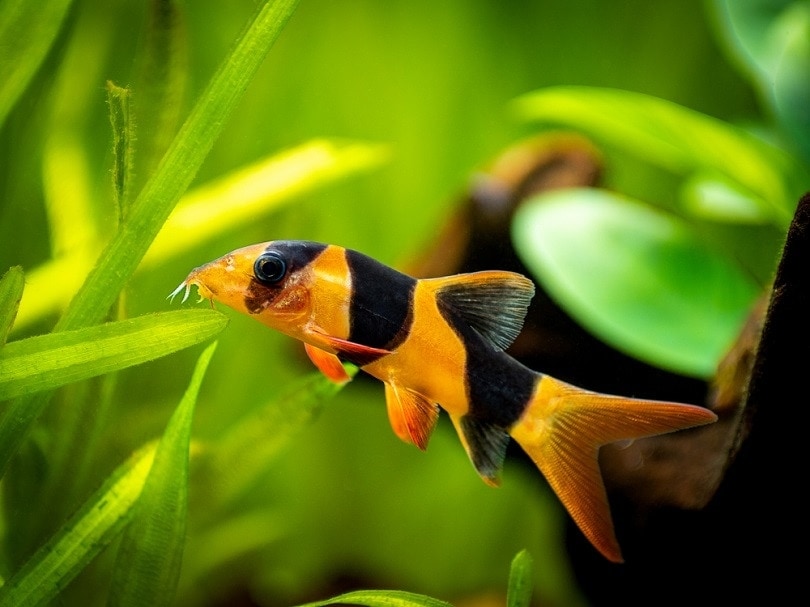
Appearance & Varieties
Most of the species look similar. They will have barbs below their mouth that they use for defense purposes. Surprisingly, there are over 1200 species in the Cobitoidea family. This is an exceptional amount for a captive fish. Alongside their barbs, they also have barbels at the base of their head. These barbels are used to detect food. Since they are bottom dwellers, they rely on these barbels to locate food that is hidden in the substrate. The superfamily name Cobitidae is derived from the term Aristotle which refers to small fish that bury under the substrate. They have an eel-like body which makes them stand out more than other aquarium fish.
Some loaches can grow up to 1 inch if they are the smaller varieties, whereas others can grow to a maximum of 20 inches. Although 16 inches is usually a maximum for large captive loach varieties. This is because loaches are not usually kept in large enough tanks in captivity. If you decide to keep a large variety of loach, you should keep them in an extremely large tank of over 300 gallons. Although a large pond will work better. Below is a summary of the main loaches found in pet stores.
- Clown loach: 15–20 cm and are diurnal (active in the daytime). They are pale orange and have black patches. The females are commonly larger than the males.
- Kuhli loach: Eel-like and has bands covering its body. Grows to roughly 4 inches and can live between 8 to 10 years old.
- Yoyo loach: Has curvy lines that spell out the word yoyo. They are predominantly white and prefer fast-moving waters.
- Hillstream loach: These fish do well in strong currents and have a taupe coloring. They have wide fins that give them the appearance of a butterfly.
- Zebra loach: They grow to 5 inches long and have black and gold along their body. As they mature, they develop an intricate pattern.
How to Take Care of Loaches
Habitat, Tank Conditions & Setup
Tank/aquarium size: Small loaches under 6 inches should be in a tank of no less than 40 gallons. If you keep a species of loach that grows over 12 inches, a tank bigger than 200 gallons is ideal. These fish do poorly in bowls or vases and will fall ill and die within a matter of weeks due to stress. Rounded aquaria are the be avoided at all costs. Not only are they small, but the curved sides are unnatural and distort your fish’s vision.
Water temperature and pH: The pH should be kept around 6.0 to 8.0. They can thrive in a range of water conditions. Since loaches are temperate water fish, they do not necessarily need a heater. The temperature should be between 20°C to 25°C. If the temperature fluctuates frequently, it is a good idea to add in a heater.
Substrate: Gravel and pebbles are to be avoided when keeping a loach. This is because they enjoy burrowing in the substrate. Gravel is too sharp and will scratch up their body. Pebbles are too heavy and there is a risk that they can squish your loach. It is recommended to use aquarium sand that is piled up about 3 inches to encourage burrowing behavior.
Plants: Live plants are beneficial in your loach tank as they help with keeping the water clean while providing a food source and a hiding space for your loach. Plants also help block out bright lights that will stress your loach out.
Lighting: It is best to not place your loaches tank in a brightly lit area. It is ideal to not keep a bright artificial light on the tank. If you do want artificial light, ensure it has a dimming option.
Filtration: A strong filter is necessary that provides a tank that provides a flowing current. If you have a species of loach that prefers fast currents, you will have to adjust the flow on your filter. They require a good aeration system and the filter should take in and filter 10 times the water volume in several minutes.
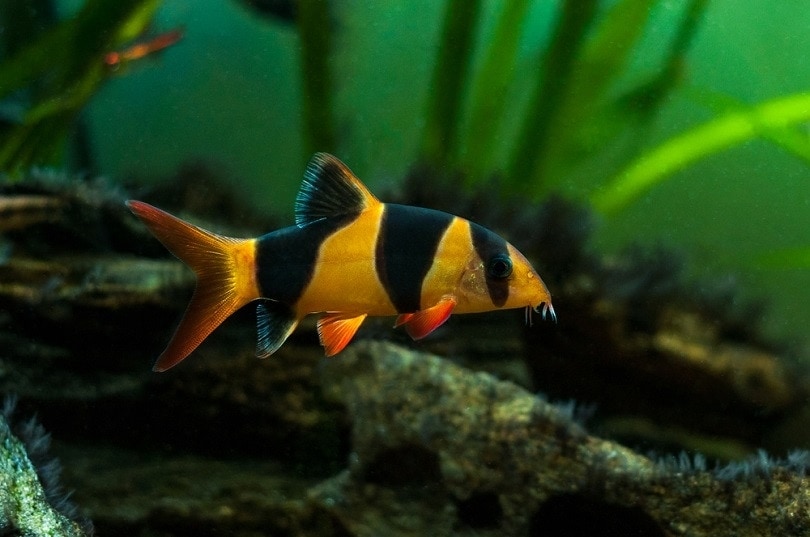
Are Loaches Good Tank Mates?
Loaches are peaceful fish that will not bother to interact with fish that are active in the day. This is because your loach will be hiding when the lights are on. Yet this does not mean caution should not be taken when choosing tankmates for your loach. It is best to house them with fish that occupy the upper regions of the tank. Small schooling fish go well with miniature loaches and create a balanced community. You should avoid keeping these fish with aggressive fish like Arowanas, Oscars, and Cichlids. These fish are territorial and will stress out your timid loach.
Below is our shortlist of some suitable tank mates that can go well with loaches.
- Rasboras
- Danios
- Tetras
- White cloud minnows
- Oto catfish
- Shrimp
- Snails
- Gourami
- Pelagic fish
- Cichlids
- Arowanas
- Angelfish
- Oscars
- Jack Dempsey’s
- Plecos
- Tiger barbs
- Chinese algae eater
- Blue gourami
- Bettas
- Red/rainbow-tailed sharks
What to Feed Your Loach
These fish are omnivores and consume insect larvae, decaying plants, and small crustaceans on the riverbed in their natural habitat. They use their mouth as a sieve through the substrate in the tank. They scavenge for their food and do not actively hunt for their food. They can also be described as opportunistic feeders. If you choose to feed pellets, flakes, or granules to your loach, you must ensure that they sink to the bottom quickly.
Loaches should be placed in an aquarium that has a decent amount of wood to host food sources like cyanobacteria. Plants also make up a necessary part of their diet and should be planted around the tank so they can forage for them. Loaches should only be fed as much as they can consume within 2 minutes. You can feed loaches foods like brine shrimp, bloodworms, and even tubifex worms. As a treat, you can feed foods like zucchini.
Keeping Your Loach Healthy
Provide your loach with a large tank, ideally over 100 gallons. To keep your loach healthy on the inside, a variety of quality foods should be fed. Supplements can be given throughout the week in small doses. If your loach happens to fall ill, you must consult with a professional to find out which medications are safe for their scaleless head. Since they are more prone to disease than other fish, their care must be spot on. You should aim to mimic their wild habitat as best as possible. This includes their diet, tank set-up, and tank mates that they may live in the wild.
Failure to keep their water temperature stable can result in problems with bacterial and fungal infections. Neither of those illnesses can be cured with normal fish medication like methylene blue. It will burn their scaleless head. Weekly water changes should be done to keep the water parameters under control.
Breeding
It is not easy to breed loaches in captivity. Yet it is achievable if you try to mimic their natural breeding conditions in the wild. You should set up a breeding tank that has a lot of hiding spots. The lights should be dimmed or turned off and the water levels should be kept low. You should also keep floating plants like duckweed in the tank. The females will use the floating plants to lay their eggs. Dense vegetation can also help encourage spawning behavior. You should lower the water hardness and maintain a pH of 6.5.
Your loach will require a large tank to be able to grow and reach its full maturity. The eggs will be bright green, and they will attach to the underside of floating plants. Remove the fish from the breeding tank after the male fertilizes the eggs. The adults will eat both the fry and the eggs. The eggs will hatch within 24 hours and the fry will require small foods like baby brine shrimp.
Note: If the eggs are infertile, they will begin to turn brown.
Are Loaches Suitable For Your Aquarium?
If you have a lot of experience with temperate water fish and you have a suitable tank for your loach, they might be the fish for you. The tank should be incredibly large, with a variety of live plants, hiding places, and driftwood. You should make sure your tank has suitable tankmates and that the water temperature does not fluctuate. The tank should have a strong filter with a low water level. If your tank ticks off all the requirements, you may be able to successfully introduce a loach or two into your tank. We hope this article has helped you understand how loaches should be cared for.
Featured Image Credit: Grigorii Pisotsckii, Shutterstock




